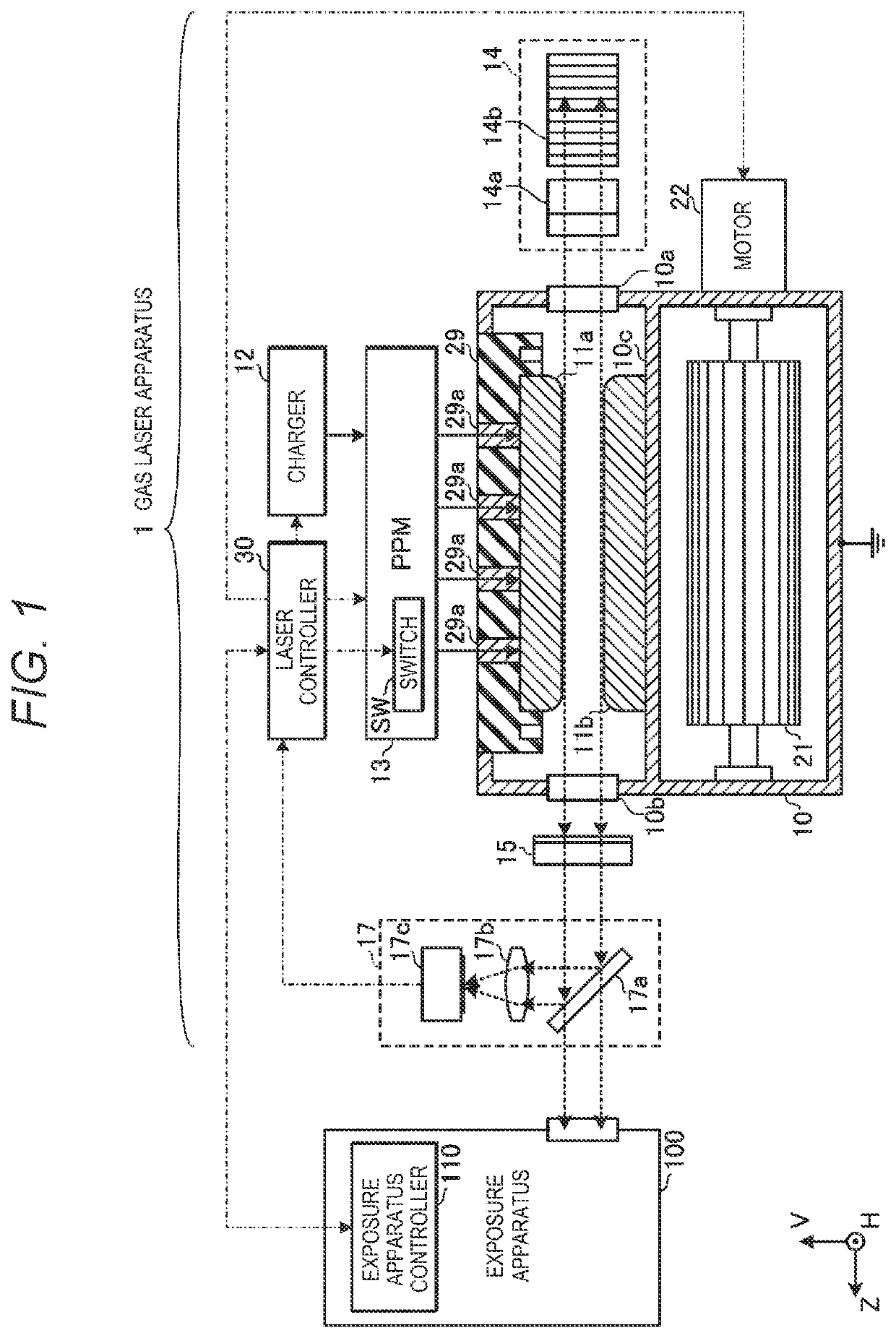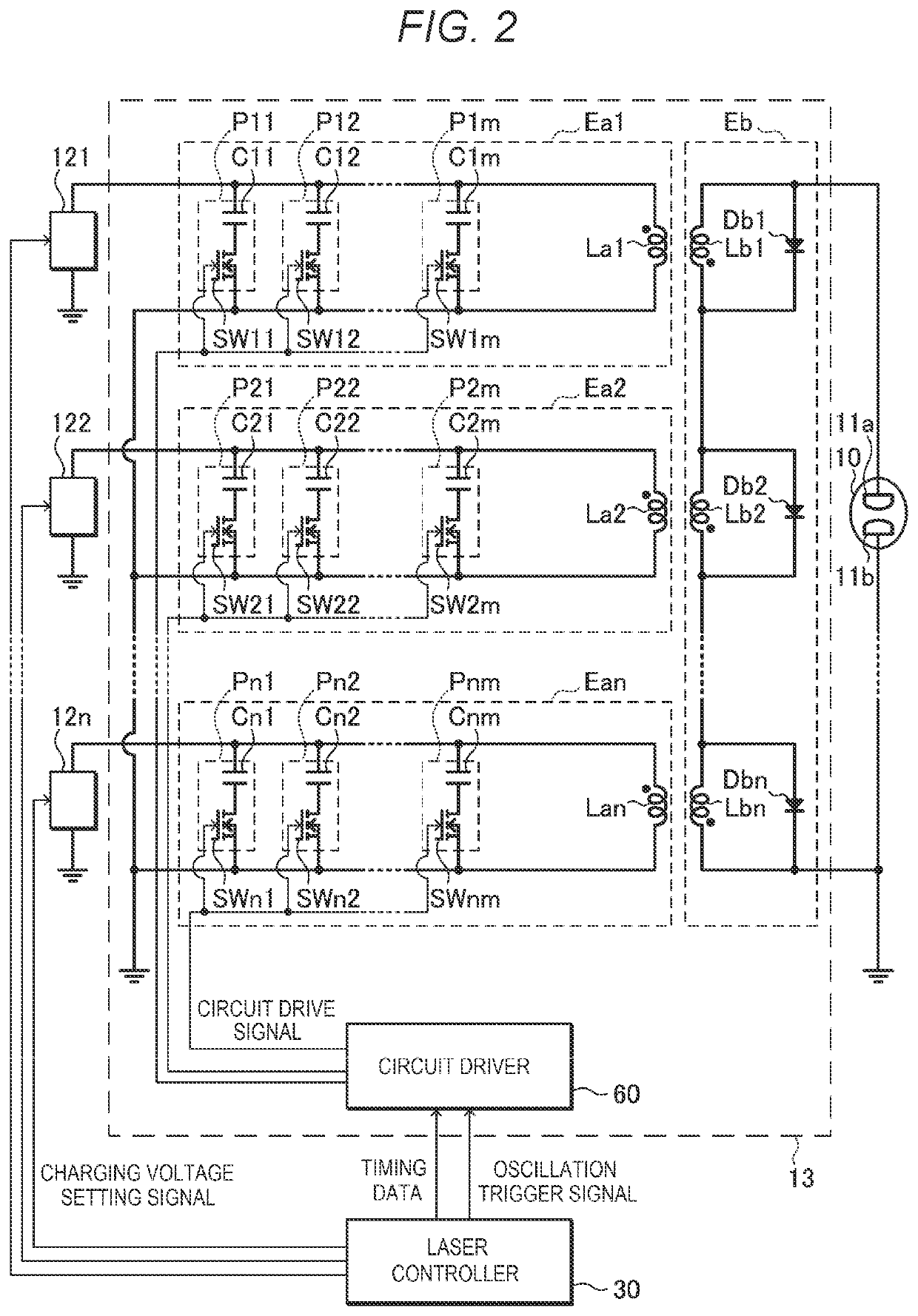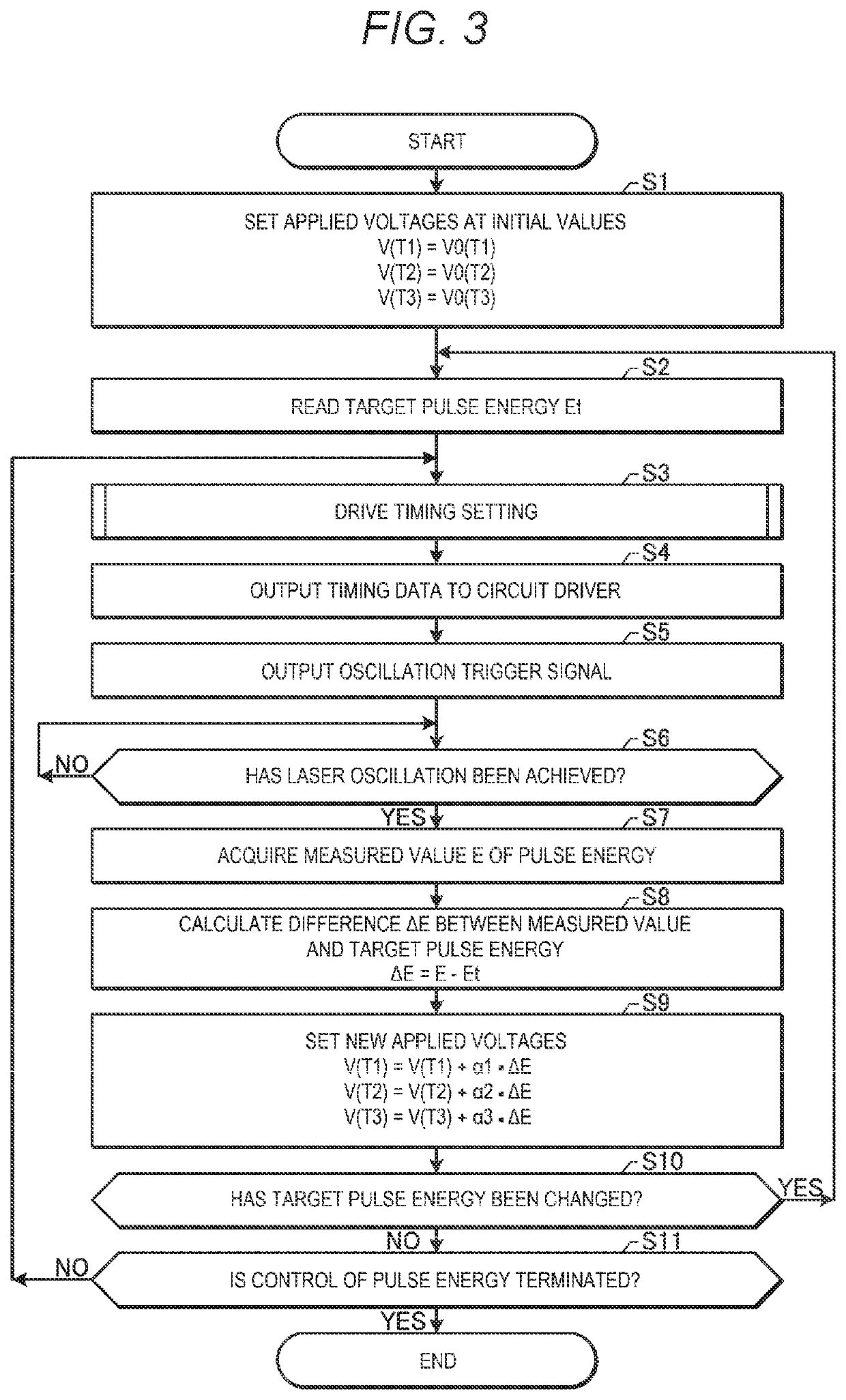High-voltage pulse generator, gas laser apparatus, and method for manufacturing electronic device
- Summary
- Abstract
- Description
- Claims
- Application Information
AI Technical Summary
Benefits of technology
Problems solved by technology
Method used
Image
Examples
Example
[0153]According to the first embodiment, the diode Dai is disposed in the primary electric circuit Eai, whereby the secondary electric circuit Eb can be simplified. The output inductance of the pulse power module 13 can thus be reduced.
[0154]Furthermore, for example, when the primary electric circuit Ea1 is not driven and the remaining n−1 primary electric circuits Ea2 to Ean are driven, damage to the switches SW11 to SWim and the charger 12 can be suppressed.
[0155]Moreover, since the current flows into the diode Dai when the capacitor Cij is charged, the capacitor Cij can be efficiently charged. In addition, since the flow of current in the primary coil Lai can be suppressed during the charging process, generation of a magnetic flux in the transformer core TCi can be suppressed, whereby energy loss can be suppressed.
[0156]The other points in the first embodiment are the same as those in Comparable Example described above.
3. Pulse Power Module Mounted on Circular Substrate
Example
[0157]FIG. 8A is a plan view showing a second embodiment in which the pulse power module 13 is mounted on a circular substrate. FIG. 8B diagrammatically shows the cross section taken along the line VIIIB-A-VIIIB in FIG. 8A. It is, however, noted that FIG. 8B is not a cross-sectional view of the secondary coil Lb but is a side view thereof. FIGS. 8A and 8B show one primary electric circuit Eai out of the n primary electric circuits Ea1 to Ean, one transformer core TCi, and part of the secondary coil Lb.
[0158]The transformer core TCi has an annular shape. A magnetic circuit MC is formed along the annular shape that forms the transformer core TCi, as shown in FIG. 8A. The transformer core TCi is located in a first plane PLi, as shown in FIG. 8B. The first plane PLi is parallel to a plane HZ. The magnetic circuit MC is formed along the first plane PLi.
[0159]The secondary coil Lb is formed of a conductive member having a cylindrical shape. The secondary coil Lb has a through hole TH, as ...
Example
[0189]The other points in the third embodiment are the same as those in the second embodiment.
5. Pulse Power Module Disposed in Laser Chamber
PUM
 Login to View More
Login to View More Abstract
Description
Claims
Application Information
 Login to View More
Login to View More - R&D
- Intellectual Property
- Life Sciences
- Materials
- Tech Scout
- Unparalleled Data Quality
- Higher Quality Content
- 60% Fewer Hallucinations
Browse by: Latest US Patents, China's latest patents, Technical Efficacy Thesaurus, Application Domain, Technology Topic, Popular Technical Reports.
© 2025 PatSnap. All rights reserved.Legal|Privacy policy|Modern Slavery Act Transparency Statement|Sitemap|About US| Contact US: help@patsnap.com



